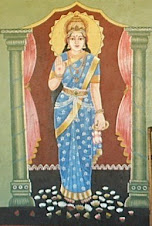The ancients of Sri Lanka used a complex set of measures of length and distance, ranging from the noola (⅛ of an inch or 3.17 mm) and riyana (cubit - 18 inches or 450 mm) to the gauwa (Sinhalese league - 5600 yards or 3¼ miles or 5.12 kilometres) and yoduna (Sanskrit yojana - 4 gauwas).
Agricultural measurements were rather less precise. The peasants measured distance across the fields in hoos; a hoo I being the distance across which a hoot could be heard. Another measure of distance was how far it took for a man walking at a normal pace to raise his sarong high enough for the wind to cool his testicles, generally called a mile (hæthapuma).
Agricultural land was traditionally measured in Amunams; an amunam of land being the area which could be sown with an amunam (5-6 bushels) of grain, or about 0.8-1 hectares (2-2 ½ acres). This unit was in use well into the middle of the 20th century, particular in litigation.
However, when the all-encompassing British Empire took over, it imposed its own imperial system of weights and measures. Imperial feet and miles took over from riyanas and gauwas. The relatively simple Sinhalese system was replaced by a complicated structure of multiplications by 3, 4, 5½, 12, 16 and 20.
Henceforth land area was measured in acres, roods, and perches. An acre was the amount of land that a team of mediaeval English oxen could plough in a day. An acre has 4 roods and a rood, 40 perches.
A perch is defined as a square pole (or rod or goad or perch), originally the length of the stick with which the ploughman goaded his oxen. In modern use a pole is 5½ yards (16½ feet or 5.03 m), so a square perch is 30¼ square yards (272.25 square feet or 82.98 m2).
Nowadays all land measurements are supposed to be in the metric system, with square metres and hectares. However, property is still sold by the perch and by the acre, although (sadly) no longer by the amunam.
.jpg)

No comments:
Post a Comment